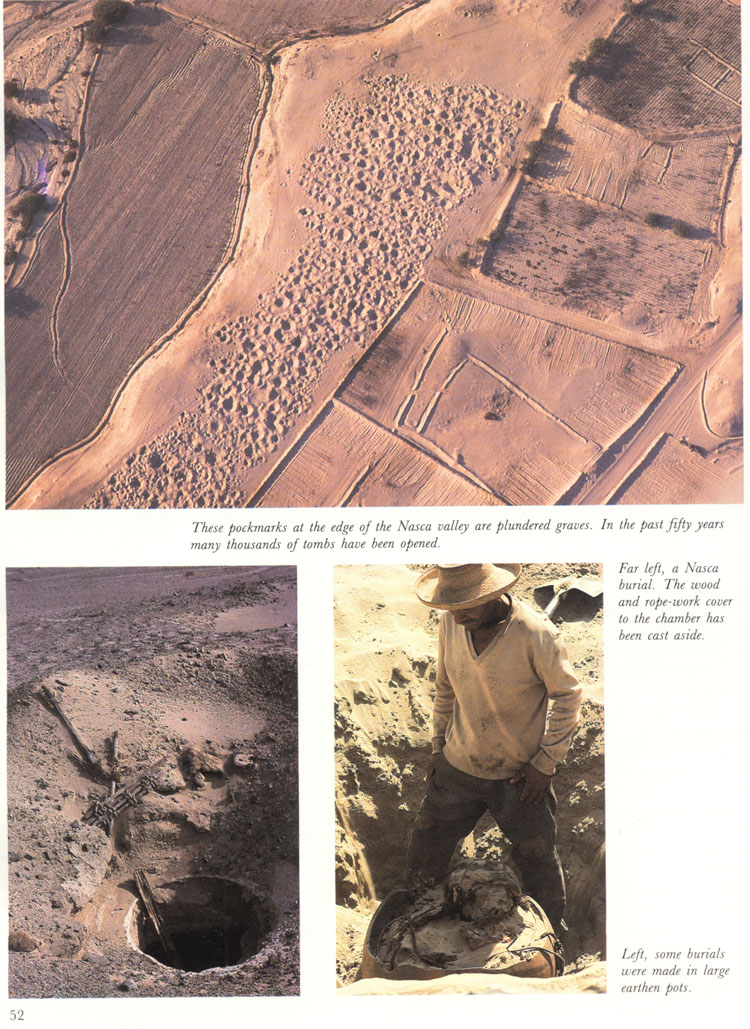
SO, LET'S FOLLOW THE TRAIL OF "REAL" CLUES

Photo from The Mystery of the Nasca Lines, pg. 52, by Tony Morrison, 1987.
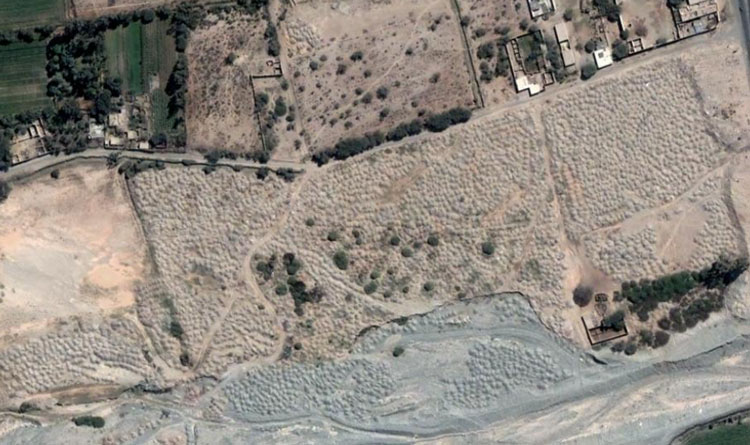
This pockmarked area adjacent to Nazca township shows yet another large grouping of plundered graves.
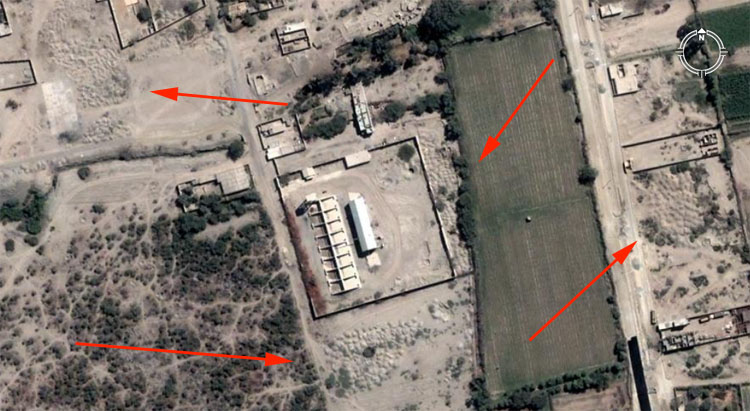
Even in the middle of Nazca's residential-rural area a huge amount of exhumation of the ancient line-builders has taken place, to acquire and sell the valuable artefacts associated with the mummies. The same holds true of locations like Lima, Peru, 236-miles NW up the coast, where tens of thousands of mummies have been exhumed. Modern, "politically correct" and "racially sensitive" books will not mention the physical anthropology or true age of the remains in these elaborately prepared burials and the ethnicity of those found within the mummy-bags remains a well guarded secret in academic and archaeological circles. A basic rule is that all remains "must" be Inca, pseudo-Inca, or similar and fit an appropriate time frame linked to the historical parameters of the known or acceptable Inca epoch.
SO, WHAT DO THE GRAVEROBBERS FIND?
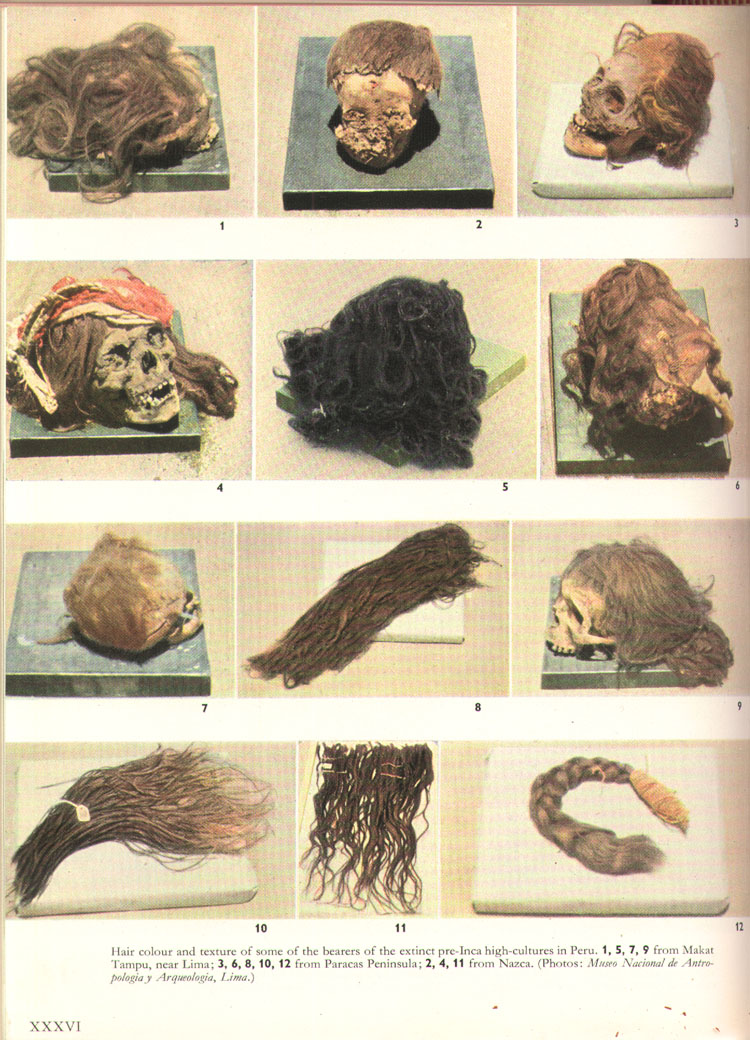
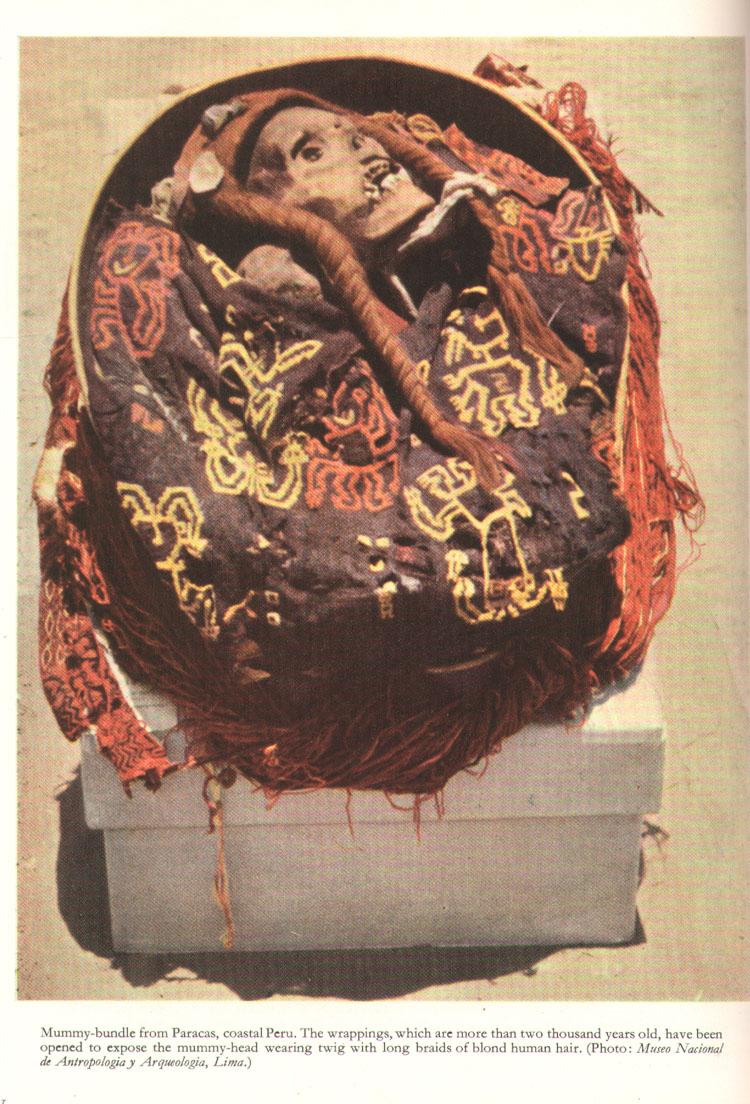
The sitting position burials were generally within beautifully woven mummy bags, which also contained many additional items, presumably for the afterlife. The textiles of the early Nazca period are unsurpassed in technical skill, design and artistic expression, showing a high degree of civilisation. Today, the sun-bleached bones of the early pre-Inca Nazcas litter the open desert, where they have been unceremoniously strewn by grave-robbers. Those plundering the goods of the former people obviously feel no spiritual of family affinity to them, as if they were a totally unrelated group or even known traditional enemies of Inca predecessors. Artefacts or body parts taken from the mummy bags are sold to collectors and, over the years, there has been a thriving local enterprise in funerary goods.
Samples of the blond, red, brown or darker hues of multi-coloured hair from the Paracus mummies, tested in 1943 by Dr. Mildred Trotter, were much finer than samples taken from the present-day Indians (on average, 30% thinner). These pre-Inca inhabitants had longer, thinner faces and were, on average, considerably taller than the latter conquerors who followed and supplanted the earlier civilisation. Books of the past fifty years have increasingly omitted to state that the early, well preserved mummies of Egypt, as well as the tens of thousands found in Peru, are the remains of Caucasoid-Europeans. Although an adept physical anthropologist can tell, virtually at a glance, the ethnicity of a well preserved skeleton or mummy, no publicly available comprehensive reports are permitted covering the physical anthropology of either ancient Egyptians, Peruvians or other censored groups like the Lapita people of the Pacific.
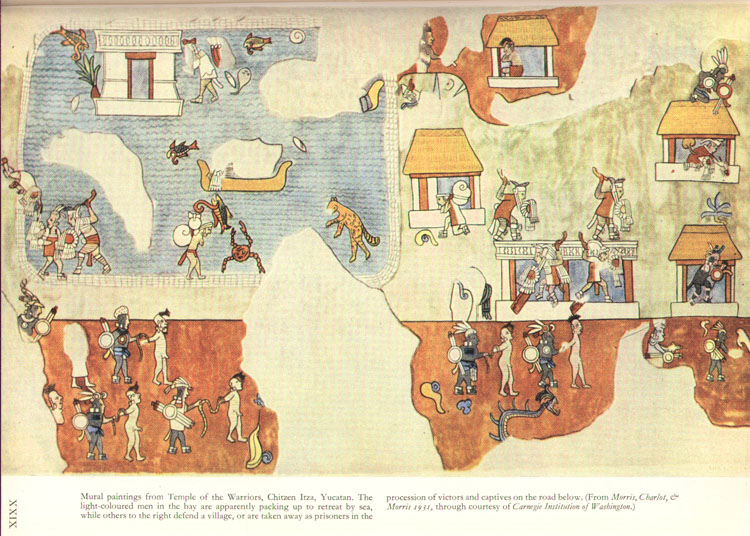
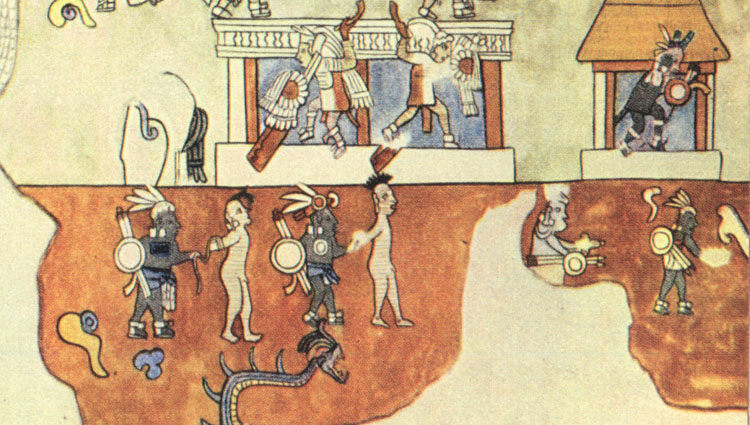
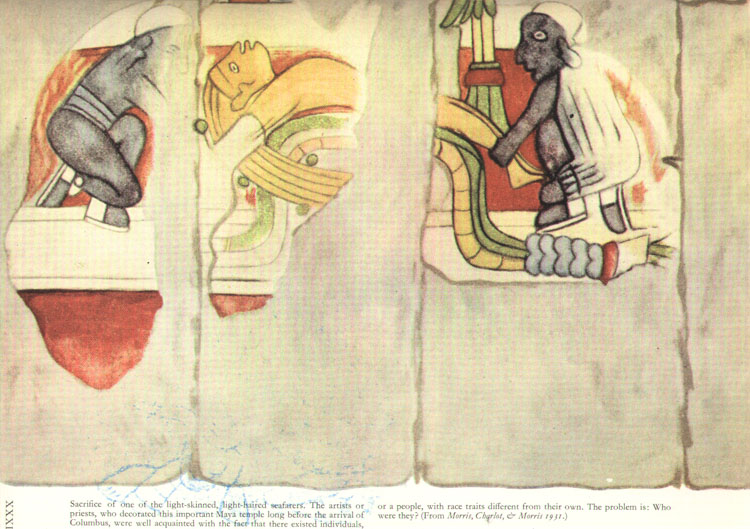
Photos from American Indians In The Pacific, colour plates between pp 320 & 321, by Thor Heyerdahl, 1952.
Ancient South American temple murals depict the fate of the earlier Caucasoid population, who fought and lost in a quest to save their lands, cities and advanced civilisation. Some managed to pack up and escape in their sailing ships, while others were forced to endure the indignities of capture and sacrifice upon the altars of their conquerors. The "Temple of the Warriors" mural even shows a ship bearing a large square rigged sail, the features of which are very reminiscent of the Viking longships. This general, hull design-style had earlier shipwright precedents in the Mediterranean Basin, extending from the Aegean Sea to Egypt to the Atlantic seaboard. For "oral traditions" concerning the wide distribution and influence of white people in ancient South America CLICK HERE
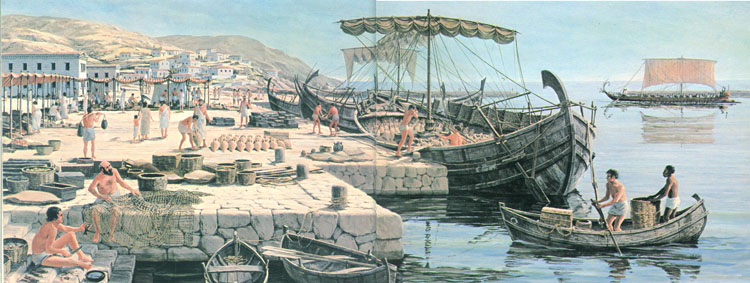
A scene depicting Greek shipping activities in the millennium preceding the Christian era. Even earlier, the Phoenicians are known to have voyaged back and forth in large cargo ships to their tin mines in Cassiterides (Tin Island...Cornwall in England) from 1300 B.C. The Abydos fleet of ocean going vessels (some up to 72-feet long) were found buried in the desert sands of Egypt in 1991. They date to 3000 BC, with yet earlier wall paintings of similar ships dating to 4500 BC.
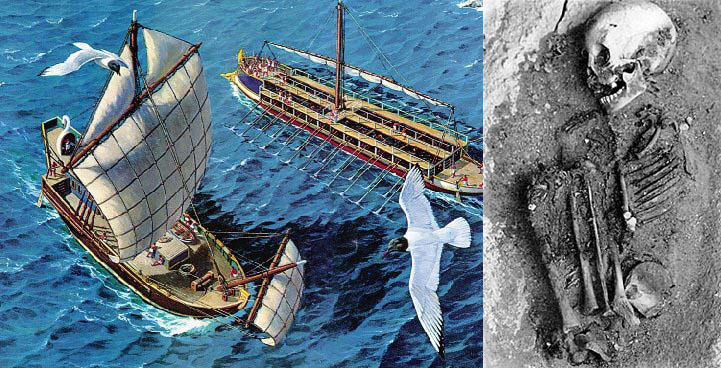
To the left is seen a Celtic Swanship, one of 220 that turned up to do battle with the Romans at the Loire Estuary in 56-BC. Julius Caesar described these ships as vessels designed for traversals of the great oceans ('vasto atque aperto mari'..."upon the vast open sea"). That ancient mariners from the Mediterranean and Europe went all over the world to set up long enduring civilisations, colonies or mining operations is attested by the skeletal and cultural evidence found on several continents and in many far-flung countries around the globe. To the right is seen a trussed, sitting position burial of an ancient Caucasoid European in a remote New Zealand cave. Geographically, New Zealand would be considered to be the most distant habital country in the world from the great civilisations of the Mediterranean and Europe. The ancient New Zealanders had blond, red, brown and other hues of European hair, just like the ancient Peruvians and both cultures shared many startling similarities. South American food plants are found in abundance in New Zealand and were taken there thousands of years ago. Amongst many other items, both cultures shared the same "Tiki"design, originating in Egypt, and made traditional stone or wooden clubs to the same design as their earlier forebears from Egypt and the European countries.
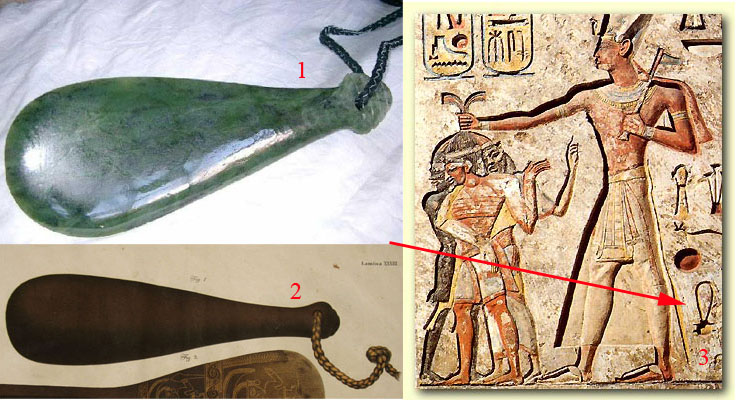
When Don Mariano Edward Rivbro (Director of the National Museum of Peru) and Juan Diego de Tschudi (Member of various scientific societies in Europe and America) wrote the book Antigüedades Peruanas (Peruvian Antiquities) in 1850, they stated:
'It is worthy of note that among the clubs there was one, the form of which is completely identical with that which is used by the inhabitants of New Zealand and other islands of the Pacific' (see Peruvian Antiquities, page 212).
Explanation of picture above: (1). Greenstone jade club from New Zealand; (2). Identical design club from Peru; (3). The same design of club shown amongst the hieroglyphs on an Egyptian wall panel of Ramassees II dispensing with his enemies. The same stone club design is found in Celtic graves of Germany, but in New Zealand could be fabricated from either stone, wood or whalebone.